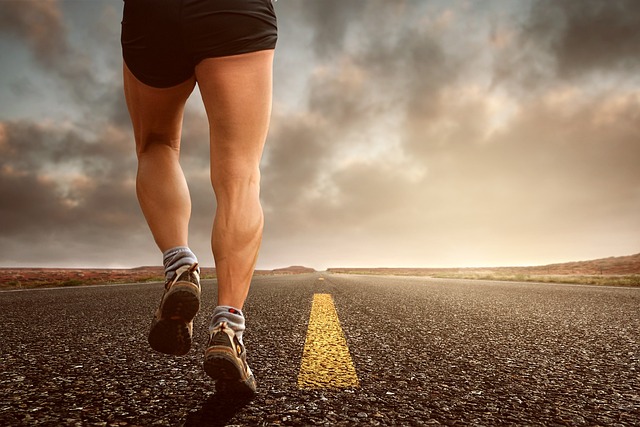Unlike cyclists, who require an arsenal of technical gear, runners only need one thing to turn over the miles: their shoes. But there’s more to a great shoe than meets the eye.
You want a shoe that fits well and feels comfortable when running. We recommend a shoe that offers plenty of wiggle room in the toe box, as this allows for proper blood flow and prevents chafing.

Upper
An excellent upper will adapt to the shape of your foot and cinch down tightly without restricting movement. Additionally, it should give your toes ample area in the toe box to spread and flex naturally while running. Ensure approximately a thumb’s width of space between the tip of your longest toe and the shoe’s edge. Tight shoes can cause blisters and hammertoes.
The upper section of running shoes is a hub for innovations. In the past decade, manufacturers, including Hoka One One, have recognized that modifying the shoe’s upper can significantly impact its feel. Even when midsoles and outsoles are identical, testers consistently discern differences in the overall feel of the shoes due to variations in the upper design. This focus on upper innovation highlights the dynamic role this component plays in shaping the running experience, showcasing how attention to detail can enhance the overall feel and performance of running footwear.
One of the most critical factors when selecting a new road shoe is whether you will run on pavement, dirt, or gravel paths. You’ll need a shoe with good traction to prevent slipping or stumbling on slippery surfaces. If you are running on rocky or dirt trails, you will need a more aggressive tread pattern to grip the surface and keep you from slipping.
Another factor to consider is how much mileage you plan on putting on your shoe. If you are logging many miles in the same pair, look for a shoe with a higher stack height, which means the amount of foam in the midsole. A higher stack height will be more durable than a lower one, and it will take longer for the foam to break down. However, if you plan on switching out your shoes every other day (or even every day), the foam in your shoes won’t have time to decompress between uses and will break down more quickly.
Midsole
The midsole of a shoe is where the bulk of its cushioning resides. Shoes with more midsole cushion can offer increased impact protection for your bones, tendons, ligaments, and muscles, keeping you fresher on longer runs. But too much midsole cushion can also decrease responsiveness, making your run feel mushy and slow. That’s why finding a shoe with the right balance of cushioning and responsiveness is essential.
This shoe has a great blend of cushion and responsiveness for a road running shoe. The significant stack height of 36mm in the heel and 31mm in the forefoot would generally lead to lateral instability. Still, the internal midfoot cage that locks your foot in place and the curved plate in the outsole combine to create a shoe that feels snappy at faster workouts or when tackling marathon pace miles but still offers a plush, springy feel on easy days.
All runners should consider whether they rotate their shoes regularly, even if other factors like your running style, the kinds of surfaces you typically run on, and the stack height, can affect how long a shoe lasts. This practice allows the shoe’s foam to decompress between runs and helps the cushioning stay fresher and longer.
As the most cushioned shoes in our guide, our testers enjoyed this model for daily running on roads and trails. A running shoe features a high-end Peba and EVA foam sandwich with a midfoot plate that adds structure. The shoe also has a pronounced early-stage rocker for transition and a reasonable heel-to-toe drop for runners who prefer that style.
While this shoe’s cushioning and a reasonably average stack height make it an excellent option for those looking to transition from more traditional, less-cushioned shoes, our testers felt that it was still too stiff for many shorter workouts and easy days. Our wider-footed testers appreciated the wide toebox, and they also liked the smooth and breathable upper. The shoe is lightweight and has a fast feel, but its lifespan may be shorter than some of the other models in this guide due to its ultra-light materials. Its incredibly lightweight and fast feeling may be worth it to some runners. Another super-light and fast-feeling shoe that’s also a good option for a wider foot. It has a similar toebox shape though it’s a bit more rounded and spacious. It’s also one of the least expensive shoes in this guide.
In pursuing an optimal road running experience, the anatomy of a great running shoe reveals a blend of crucial elements. From the cushioning in the midsole to the support in the upper, every component plays a vital role in maximizing comfort. The outsole grips the road, the midsole absorbs impact, and the upper secures the foot – together, they harmonize to create a footwear symphony. Whether you prioritize stability, breathability, or lightweight design, a significant road running shoe is a carefully crafted masterpiece that transforms each stride into a journey of comfort and performance. Step into comfort, step into excellence.











